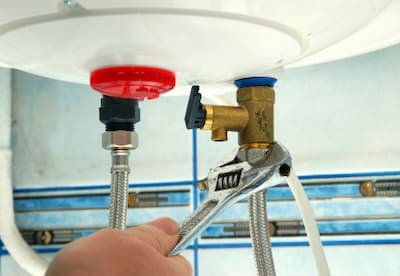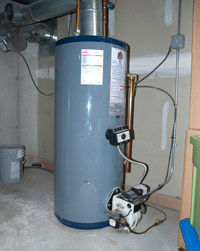Professional Advice for Caring for Your Home's Hot Water SystemTips on How to Keep Your Home's Hot Water System in Good Condition
Professional Advice for Caring for Your Home's Hot Water SystemTips on How to Keep Your Home's Hot Water System in Good Condition
Blog Article
Are you currently interested in help concerning How to Maintain Your Water Heater & Prolong its Life?

Warm water is essential for everyday comfort, whether it's for a rejuvenating shower or cleaning dishes. To guarantee your warm water system runs successfully and lasts longer, normal upkeep is essential. This short article gives sensible tips and insights on how to maintain your home's hot water system to avoid interruptions and pricey repair work.
Intro
Keeping your home's hot water system might appear overwhelming, but with a few basic actions, you can ensure it operates efficiently for several years to find. This guide covers whatever from comprehending your hot water system to DIY upkeep pointers and knowing when to hire expert aid.
Relevance of Preserving Your Warm Water System
Normal maintenance not just extends the lifespan of your hot water system yet also ensures it operates efficiently. Neglecting upkeep can lead to lowered performance, higher energy bills, and also early failing of the system.
Signs Your Warm Water System Needs Upkeep
Knowing when your hot water system requires interest can stop major issues. Look out for signs such as inconsistent water temperature, weird sounds from the heating system, or corroded water.
Recognizing Your Warm Water System
Prior to diving right into upkeep tasks, it's useful to understand the basic parts of your warm water system. Commonly, this consists of the hot water heater itself, pipelines, anode rods, and temperature controls.
Monthly Upkeep Tasks
Normal month-to-month checks can assist catch small concerns prior to they escalate.
Purging the Hot Water Heater
Purging your water heater removes sediment buildup, improving efficiency and prolonging its life.
Checking and Replacing Anode Rods
Anode rods avoid corrosion inside the tank. Evaluating and replacing them when worn out is critical.
Evaluating and Changing Temperature Level Settings
Changing the temperature settings guarantees optimal performance and safety.
Do It Yourself Tips for Upkeep
You can do numerous upkeep tasks yourself to keep your hot water system in top condition.
Looking for Leakages
On a regular basis examine pipelines and links for leakages, as these can cause water damage and greater costs.
Checking Pressure Alleviation Valves
Evaluating the stress relief valve ensures it functions appropriately and avoids excessive stress build-up.
Protecting Pipes
Shielding warm water pipes reduces warmth loss and can conserve energy.
When to Call a Professional
While do it yourself maintenance is advantageous, some problems need professional competence.
Facility Issues Calling For Expert Aid
Examples consist of significant leaks, electric issues, or if your hot water heater is regularly underperforming.
Regular Professional Maintenance Benefits
Professional maintenance can consist of extensive evaluations, tune-ups, and making sure compliance with safety and security standards.
Final thought
Regular maintenance of your home's warm water system is important for performance, long life, and cost financial savings. By adhering to these ideas and knowing when to seek expert aid, you can ensure a reputable supply of warm water without unexpected interruptions.
How to Maintain an Instant Hot Water Heater
Before tinkering with your hot water heater, make sure that it’s not powered on. You also have to turn off the main circuit breaker and shut off the main gas line to prevent accidents. Also turn off the water valves connected to your unit to prevent water from flowing into and out of the appliance. 2. When you’re done, you have to detach the purge valves’ caps. These look like the letter “T” and are situated on either side of the water valves. Doing so will release any pressure that has accumulated inside the valves while at the same time avoid hot water from shooting out and burning your skin. 3. When the purge valves’ caps are removed, you have to connect your hosing lines to the valves. Your unit should have come with three hoses but if it didn’t, you can purchase these things from any hardware or home repair shops. You can also get them from retail stores that sell water heating systems. Read the user’s manual and follow it to complete this task properly. When the hosing lines are connected, open the purge port’s valves. 4. You should never use harsh chemical cleaners or solutions when cleaning your unit. Make use of white vinegar instead. It should be undiluted and you’ll probably use about 2 gallons. 5. Now flush your water heater. This task should probably take about 40 minutes. We can’t give you specific directions for this because the procedure is carried out depending on the type, model and brand of your heater. With that being said, refer to the user’s manual. 6. When you’re done draining the unit, you have to turn off the purge port valves again. Remove the hosing lines that you earlier installed on each of the water valves. Put the valve caps (purge port) back in their respective places and be very careful so as not to damage the rubber discs that are found inside these caps. 7. Now that everything’s back in place, check your user’s manual again to find out how to reactivate your water heating system. 8. Once it is working, turn one of your hot water faucets on just to let air pass through the heater’s water supply pipes. Leave the tap on until water flows smoothly out of it. https://www.orrplumbing.com/blog/2014/september/how-to-maintain-an-instant-hot-water-heater/

Hopefully you enjoyed reading our article about Tips on Maintaining a Water Heater. Thank you for taking time to browse our blog. Enjoyed reading our article? Please share it. Help someone else find it. Thanks for your time. Kindly stop by our website back soon.
Call Today Report this page